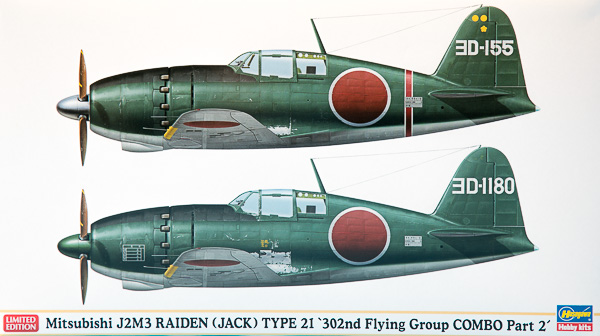
Hasegawa 1/72 Mitsubishi J2M3 Raiden (Jack) Type 21 "302nd Flying Group Combo"
By Chris Banyai-Riepl
Overview
The Mitsubishi J2M Raiden came about in response to the increased bombing missions over Japan. Designed as a high-altitude interceptor, the J2M featured a stubby fuselage with a closely cowled Mitsubishi Kasei engine and wing-mounted 20mm cannons. The first operational J2Ms entered service in 1943, but didn't see combat until June 1944 during the Battle of the Philippine Sea. Production remained limited, though, and the lack of a turbocharger reduced its effectiveness against B-29 bombers. A single J2M survives today at the Planes of Fame museum in Chino.
The Kits
The Hasegawa 1/72 Raiden kit is an older one, but one that holds up well over the years. Molded in light gray plastic, the kit features recessed panel lines, a basic interior, and a drop tank for the centerline. This being a combo boxing, you get two J2M Raidens in the box, and the decal sheet provides markings for three aircraft.
Jumping into the construction, the cockpit is very simple, with the details provided in the form of a decal instrument panel. The seat is separate, as is the control stick, while the rudder "pedals" and side consoles are molded into the floor piece. A rear bulkhead and separate instrument panel complete most of the interior, and for two of the marking options there is an additional clear bulletproof glass insert to add.
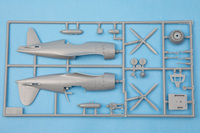
|
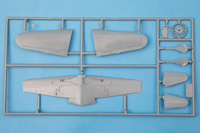
|
With the interior done, the fuselage can be closed up. Not much more goes on with this assembly, as the engine is tightly cowled and therefore no need for an engine assembly. There is a separate cowl piece, which also gets a separate piece with impeller blades, but that's it for the fuselage assembly. On the front end, the propeller is provided with two styles of propellers to choose from, with a separate spinner capping that off.
Moving on to the flying surfaces, the stabilizers are simple right and left pieces, with solid tab locators that should minimize any seam work. For the wing, you get a one-piece lower wing and two upper halves. The wing root is large on the Raiden, and that is molded with the fuselage, so for the most part you'll be dealing with simple areas for filling on these parts. The landing gear is simple as well, with a one-piece strut and a separate wheel. The tailwheel is also separate. Finishing off the build is the drop tank, which can be left off if you want a cleaner-looking J2M.
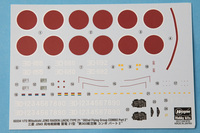
|
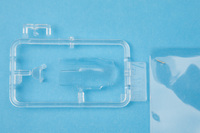
|
The decals are nicely printed and offer three options, all from the 302nd Naval Flying Group. All three examples are finished in Mitsubishi dark green over Mitsubishi light green-gray, with a blue-black anti-glare section on the upper forward fuselage. The first option is #155 and has a red band around the rear fuselage and three kill markings on the tail. The second and third options are #1180 and #1192, both of which have no fuselage band and a cowling data panel.
Conclusion
The Hasegawa 1/72 J2M Raiden kit is a fun little model that will make for a great weekend project. While the interior is simple, the overall build will be fast, which leaves more time to experiment with interesting painting finishes. The Raiden was a plane with paint that tended to chip, and there's lots of methods to create that. With two kits in the box, you can give a couple ideas a try, and see what works best. My thanks to Hasegawa USA for the review sample.
